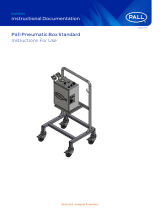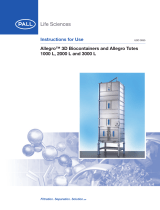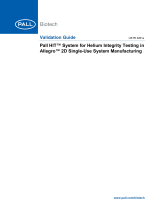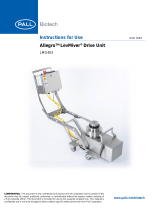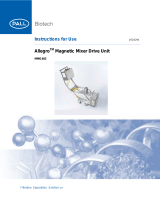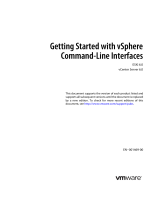Page is loading ...

Restricted - Company Proprietary
BIOTECH
Instructional Documentation
USD3516
mPathTM Control Tower and mPath Link Software
Instructions For Use

2
Restricted - Company Proprietary
Contents
1 What’s in the Box?....................................................................................................................................................................3
2 Specifications.............................................................................................................................................................................3
2.1 mPath Control Tower............................................................................................................................................................................................................................ 3
2.2 mPath Link Server .................................................................................................................................................................................................................................... 5
2.2.1 Hardware ............................................................................................................................................................................................................................................................5
2.2.2 Software ...............................................................................................................................................................................................................................................................5
3 Safety Sym bols and Statements .......................................................................................................................................... 6
3.1 Types of Safety Symbols .....................................................................................................................................................................................................................6
3.2 Safety Symbols Within This IFU ................................................................................................................................................................................................. 7
4 Overview .................................................................................................................................................................................... 8
5 Abbreviatio ns and Key Phrases ........................................................................................................................................... 12
6 Step by Step Guide................................................................................................................................................................. 13
6.1 Control Tower Connections.......................................................................................................................................................................................................... 13
6.2 Gas Connections....................................................................................................................................................................................................................................... 13
6.3 Bioreactor Co nnections....................................................................................................................................................................................................................14
6.4 Side Panel Connections....................................................................................................................................................................................................................14
6.5 Power on control tower .................................................................................................................................................................................................................... 15
6.6 Network Connections ......................................................................................................................................................................................................................... 15
6.7 User Management .................................................................................................................................................................................................................................16
6.8 Adding a New Control tower ...................................................................................................................................................................................................... 17
6.9 Adding a New Unit................................................................................................................................................................................................................................. 17
6.10 User Interface Overview ...................................................................................................................................................................................................................18
6.11 Recipes................................................................................................................................................................................................................................................................18
6.12 Scheduling and Running a Batch.........................................................................................................................................................................................19
6.13 Home Screen................................................................................................................................................................................................................................................19
6.14 Process Screen ..........................................................................................................................................................................................................................................20
6.15 Batch Screen ................................................................................................................................................................................................................................................ 21
6.16 Alarms .................................................................................................................................................................................................................................................................. 21
6.17 Trends.................................................................................................................................................................................................................................................................. 22
6.18 Events.................................................................................................................................................................................................................................................................. 22
6.19 Reports............................................................................................................................................................................................................................................................... 23
6.20 Settings..............................................................................................................................................................................................................................................................24
6.21 Mobile Application ................................................................................................................................................................................................................................24
7 Pall Service .............................................................................................................................................................................. 25
7.1 Trouble Shooting Contact............................................................................................................................................................................................................. 25
8 End of Life Disposal ............................................................................................................................................................... 26

3
Restricted - Company Proprietary
1 What’s in the Box?
Item Description
Image
Qty
mPath control tower – one of the following options:
mPath control tower, PreSens pH/dissolved oxygen (DO), pumps x 3
mPath control tower, PreSens pH/DO, pumps x 0
mPath control tower, PreSens x 0, pumps x 3
mPath control tower, PreSens x 0, pumps x 0
1
mPath Link Server
N / A
1
2 Specifications
2.1 mPath Control Tower
Table 1
Control tower specifications
Models
KMPATHBRXPS2P3
KMPATHBRXPS2P0
KMPATHBRXPS0P3
KMPATHBRXPS0P0
mPath control tower, PreSens pH/DO, pumps x 3
mPath control tower, PreSens pH/DO, pumps x 0
mPath control tower, PreSens x 0, pumps x 3
mPath control tower, PreSens x 0, pumps x 0
Facility
Dimensions (W x D x H)
230 x 600 X 450 mm (590 mm with hangers attached)
Weight
20 kg
Materials of construction
Polymer, stainless steel, aluminum
Electrical supply
Voltage: Automatically adjusted between 100 – 240 V AC
Input frequency: 50 Hz/60 Hz
Electrical connection
Supplied with US, EU and UK cables
Utilities
Power consumption
360 W maximum
Gas supply
2.0 – 6.0 bar / 29 – 87 psi
Control architecture
Beckhoff PLC, SBC
mPath Link supervisory control and data acquisition
(SCADA) software
Operating system
Pall Corporation SCADA
mPath Link server: Microsoft Windows 10 Pro
Control Tower: Microsoft Windows Embedded Compact
Oracle : MSSQL and Java

4
Restricted - Company Proprietary
Control tower
Automation design
Developed and tested in accordance with GAMP 5
Electronic records and
electronic signatures
Compatible with FDA 21 CFR Part 11 &
EudraLex Annex 11
Network compatibility
Integrated OPC-UA server
Data export / communication
USB, OPC-UA over ethernet
Remote operation
Yes, support for remote desktop and mobile clients
through mPath Link SCADA software
Standalone operation
No, requires mPath Link SCADA software for operation
Gas
Gas connections
6 mm push to connect fittings
6 mm outer diameter (OD) pneumatic tubing
Gas flow control
6 thermal mass flow controllers (TMFCs )
Input gases supported
N2, O2, air and CO2
Pressure regulation
Onboard preset regulators, inputs from
2 bar (29 psi) – 6.0 bar (87 psi) accepted
Pumps
Pumps (on selected models)
3 variable speed pumps (14 - 211 rpm), control requiring
speeds less than 14 rpm achieved through pulse width
modulation (PWM)
Compatible tubing
Up to internal diameter (ID) 8 mm and 1.6 mm wall
thickness
Maximal flow rate
Up to 844 mL/min
(tubing with ID 8 mm and OD 11.2 mm)
Flow rate with standard single-use system (SUS)
1 line up to 844 mL/min
(tubing with ID 8 mm and OD 11.2 mm)
2 lines up to 633 mL/min
(tubing with ID 6.4 mm and OD 9.6 mm)
External pump support
Up to 4 via user configurable I/O
Sensors
Single-use sensors (on selected models)
Integrated PreSens – 1 pH/1 DO
Temperature
Pt100
Pressure
Gas input, 4 input lines
Gas output/biocontainer pressure, 2 output lines
Weight
3 biocontainer load cells; each hanging load cell can hold a
maximum weight of 2 kg.
A combined maximum total weight of 4.5 kg can be hung
from the mPath control tower

5
Restricted - Company Proprietary
Safety
E-stop & interlocks
Hard emergency stop on both platform and tower, soft
stops on all user interfaces, programmable and
preconfigured safety interlocks
CE marked
WEEE Directive – 2012/19/EU
UL and CSA optional available
EMC Directive 2014/30/EU
BS EN 61326-1: 2013
Low Voltage Directive (LVD) 2014/35/EU
BS EN 61010-1: 2010
Machinery Directive 2006/42/EC
BS EN ISO 12100:2010
RoHS Directive
2011/65/EU
IP rating
IP54, IEC 60529 Ed 2.2 b 2013
Operating conditions
Laboratory environment
The ambient temperatures must be between 5 °C (41 °F)
and 40 °C (104 °F).
Maximum relative humidity of 80% for temperatures up to
31 °C decreasing linearly to 50% relative humidity at 40 °C.
2.2 mPath Link Server
2.2.1 Hardware
Table 2
Server hardware
Item
Specification
Memory (RAM)
32 GB
CPU
1 x Intel i3-8100 3.60Ghz
Storage
1TB
Software
Ignition, Windows 10 LTSC, MSSQL Standard
2.2.2 Software
Table 3
Lite version
Software License
Specification
Windows 10 LTSC
Win 10 IoT Ent 2019 LTSC MultiLang ESD OEI Value
Windows MSSQL
Microsoft SQL Server IoT 2019 Client Access License (1 Device)
(ESD)
Ignition v8.1
Ignition Perspective License (1 client)
Ignition OPC UA Server Module
Ignition Tag Historian License
Java embedded

6
Restricted - Company Proprietary
Table 4
Unlimited version
Software License
Specification
Windows 10 LTSC
Win 10 IoT Ent 2019 LTSC MultiLang ESD OEI Value
Windows MSSQL
Microsoft SQL Server IoT 2019 Standard 4 Core (ESD)
Ignition v8.1
Ignition Perspective License (unlimited)
Ignition OPC UA Server Module
Ignition Tag Historian License
Java embedded
3 Safety Symbols and Statements
3.1 Types of Safety Symbols
All safety symbols; warning, prohibition, mandatory and Globally Harmonized System (GHS) can / will be
accompanied by additional text and signs to explain the reason for the warning, explain the nature of the
prohibition, and explain the reason for the action.
Table 5
ISO 7010 safety signs and symbols
Color
Meaning / Purpose
Example
Description
Instruction and Information
Red
Prohibition / Danger
Red ring and diagonal bar with
black symbol on white
background
Specifies behavior that is prohibited
because it would result in an immediate or
potential risk of personal injury or threat to
health / life.
Yellow
Warning / Caution
Yellow triangle with black border
and black symbol
Warns of hazards which could result in
personal injury or threat to health.
Blue
Mandatory / Information
Blue circle with white symbol
Specifies an action required or informs of
information to safeguard personal health
and / or avoid risk of personal injury.
Red
GHS Hazards
Red diamond, white background
with a black symbol
Classifies the hazards of chemical products
and communicates health and safety
information.

7
Restricted - Company Proprietary
3.2 Safety Symbols Within This IFU
Table 6
Safety signs and symbols within this document
Symbol
Definition / Meaning
Prior to operating, the instructions must be read in entirety
Highlights important information regarding instructions for use
Caution potential risk to equipment
Caution possibility of electric shock

8
Restricted - Company Proprietary
4 Overview
Figure 1
Labelled overview of mPath control tower
No.
Item
Description
1
Peristaltic pumps. Only on part numbers:
MPATHBRXPS2P3
MPATHBRXPS0P3
Three variable speed Watson-Marlow 314D pump heads are located
on the front of the control tower. These pumps are designed to
operate with tubing bore sizes in the range 0.5 mm to 8 mm
2
Pump status LEDs. Only on part numbers:
MPATHBRXPS2P3
MPATHBRXPS0P3
Three LEDs provide the user with information on the status of
the pumps
3
Status illumination
An illuminated ring is located on the front of the control tower to
provide the user with general alarm status
4
Emergency stop
An E-stop is located on the front of the control tower. This is an E-stop
for the control tower only!
5
Tablet dock
The user can set up recipes and monitor progress through a tablet
computer or HDMI touchscreen that may be docked on top of the
control tower. A charging point is available on the connector panel
and an HDMI output on the rear of the instrument
6
Connector panel
The connector panel provides for a range of sensor inputs (both
electrical and optical) and control outputs

9
Restricted - Company Proprietary
Figure 2
Labelled overview of mPath control tower rear panel
No.
Item
Description
1
Ventilation exhaust
To allow air used for cooling to exit the mPath control tower
2
Ethernet
Network connection
3
HDMI
Monitor connection
4
USB (x2)
Keyboard and mouse connections
5
AC power on / off switch
The equipment can be switched on/off using the AC power on/off switch on the rear panel
6
AC Inlet and fuse
Power to the equipment is provided through the AC inlet using one of the three supplied
detachable power cords (UK, EU or US power plugs)
7
Ventilation inlet
To allow external air to be drawn into the mPath control tower for cooling
8
Product label
Product and safety information
9
Bioreactor connections
Connectors that allow a variety of Pall range laboratory scale bioreactors to interface with
the mPath control tower
10
Ground
For peripheral equipment requiring a ground connection
11
Gas inlets
Four 6 mm quick-fit connectors that can be connected to pressurised supplies of air,
nitrogen, carbon dioxide and oxygen, 2 (29 psi) - 6 bar (87 psi) supply pressure.

10
Restricted - Company Proprietary
Figure 3
Product safety label
Figure 4
mPath control tower left side panel

11
Restricted - Company Proprietary
No.
Item
Description
1
Gas outlets
The control tower provides two gas outlets (Primary and Secondary) which provide a
controlled flow/mixture of the inlet gases:
Primary provides gas mixes of CO2, Air/N2, N2 and O2
Secondary provides gas mixes of CO2 and Air/N2
2
Tablet charging connection
A USB charging port that can be used to charge a docked tablet is also provided (No
data transfer capability)
3
Configurable I/O
The control tower provides four M12 A-coded 8-way female connectors that offer a
range of I/O signals
4
Bioreactor control connections
Electrical connections that control bioreactor functions such as heaters and stirring
systems
Mag Stirrer – 2mag bioMIX drive stirrer connection
Filter Heater - M12, A-coded, 5-way, female connector, 0 - 24 V
Peltier - controllable supply for Peltier heater/cooler or resistive heater - output is
presented on an M12 T-coded
4-way female connector, 0 to ± 21 V, 0 to ± 4 A.
5
Bioreactor sensor connections
Electrical and optical connections
pH and DO – electrochemical and fiber optic
CO2 – electrochemical
Load Cell – M12, A-coded, 5-way, female connector, 24 V supply, 1 x 0 - 20 mA input.
Temperature – PT 100
Pressure – M12, A-coded, 5-way, female connector, 24 V supply, 1 x 0 - 20 mA input or
1 x 0 - 10 V input
Biomass – M12, A-coded, 5-way, female connector, 0 - 20 mA.
Biomass – Aber biomass Modbus communication
Figure 5
mPath control tower right side

12
Restricted - Company Proprietary
No.
Item
Description
1
Instrument feet
The instrument is mounted on feet that elevate the instrument to allow access to all
surfaces for cleaning and for convenience in routing control cables to bioreactor
vessels placed on the opposite side of the control tower
2
Maintenance access panel
Pall qualified service engineers can access the control tower through removable
panels on both sides
3
Biocontainer weighing system
The weighing system consists of load cells within the instrument and removable
hangers that provide a method for monitoring the weight of up to 3 biocontainers –
maximum volume 2 liter per biocontainer hanger – maximum total volume 4.5 liters.
5 Abbreviations and Key Phrases
The abbreviations / key phrases below will appear throughout the document.
Table 7
Abbreviations and key phrases
Abbreviation / Key Phrase
Definition
IFU
Instructions for use
OS
Operating system
DO
Dissolved oxygen
Unit
Connected unit operation to mPath control tower (e.g. Allegro ™ XRS or Xpansion® bioreactors)
OD
Outer Diameter
I/O
Inputs and outputs (e.g. connected hardware, sensors and gases)

13
Restricted - Company Proprietary
6 Step by Step Guide
Step 1.
6.1 Control Tower Connections
1. Connect the power.
2. Use the Ethernet port on the rear of the
mPath control tower and connect it to the
appropriate network point via a CAT6 Ethernet
patch cable or directly connect to the mPath
Link server.
3. Perform the same task with the mPath Link
server. Connect CAT6 Ethernet patch cable to
the Ethernet port located at the rear of the
unit to the appropriate network point.
4. The Pall bioreactor installation specialist will
refer to Pall IT Technical Advisory Note
reference USD 3222, to use the IP address set
by your IT department to configure the mPath
bioreactor control tower.
Step 2.
6.2 Gas Connections
1. Using 6 mm OD, 6 bar rated pneumatic tubing
and tubing connectors, gases should be
connected from the utilities gas regulators (2 - 6
bar) to the rear panel gas connections on the
control tower and from the control tower to the
bioreactor.
2. Connect the primary and secondary outlet ports,
if required, from the left-hand side of the mPath
bioreactor control tower to the bioreactor in use
with 6 mm OD pneumatic tubing.
▪ Primary provides gas mixes of CO2, air/N2, N2
and O2.
▪ Secondary provides gas mixes of CO2 and
air/N2.
3. To safely connect gas outlets to the bioreactor
gas inlet line, a push-to-connect to ¼ in. hose
barb should be used.

14
Restricted - Company Proprietary
Step 3.
6.3 Bioreactor Connections
Certain permanent connections to the chosen
bioreactor are located on the rear panel of the tower.
Connect these as shown in the image.
Points to note:
▪ Allegro XRS 25 bioreactor – Ensure the
bioreactor is powered off before making any
connections.
▪ iCELLis® Nano bioreactor – Connect the
docking station power cable to the ‘Pall
Power’ port and connect the Modbus cable to
the ‘Modbus’ port on the rear panel of the
mPath control tower.
▪ Xp ansion bioreactor – No connections from
the rear of the bioreactor are made.
The iCELLis Nano bioreactor docking station does
not have a power button. It will power on once the
mPath control tower is powered on.
Step 4.
6.4 Side Panel Connections
Ensure the single-use bioreactor vessel is installed
before proceeding. Please refer to the respective
product installation guide for detailed instructions on
the required connections.
Connect all required inputs and outputs at this point:
1. Gas outlets
2. Tablet charging connection
3. Configurable I/O
4. Bioreactor control connections
5. Bioreactor sensor connections

15
Restricted - Company Proprietary
Step 5.
6.5 Power on Control Tower
1. Connect the control tower AC inlet to an AC
power supply (preferably an uninterruptible
power supply) using one of the supplied
detachable power cords (UK, EU or US power
plugs).
2. Once the control tower is connected, switch on
the power via the AC power on / off switch shown
in Step 1.
3. The status ring on the front of the control tower
will flash blue when the control tower is switched
on. After approximately 40 seconds the status
ring will display a solid blue color or flashing
magenta.
4. If the status ring does not show a solid blue color
or flashing magenta after approximately 40
seconds, refer to the troubleshooting section in
the manual USD3517 .
5. The iCELLis Nano bioreactor and docking station
will power on together with the control tower.
The Allegro XRS 25 bioreactor should now be
powered on via the bioreactor power switch (see
the product user manuals).
Step 6.
6.6 Network Connections
1. The Pall installation engineer will assist during
the following steps to ensure that the mPath
bioreactor control tower and the mPath Link
server are communicating via the IP addresses
provided on the network configuration you have
chosen.
2. Connect a monitor to the HDMI port on the
mPath Link server along with a keyboard and
mouse.
3. Power on the mPath Link computer by ensuring
the power cord is connected to an electricity
supply, preferably on an uninterruptible power
supply, then press the power button located on
the front. The power button should light blue
when powered on.

16
Restricted - Company Proprietary
4. Connect a monitor or touch screen to the HDMI
port on the rear of the bioreactor control tower. It
is important to plug the keyboard and mouse in
first before making the HDMI connection
otherwise the screen may not display.
5. The Pall engineer will plug the keyboard and
mouse back into the mPath control tower and
using their unique passcodes, will set the IP
address and Sub Net mask for the mPath control
tower that you have provided. The screen, mouse
and keyboard can then be connected back up to
the mPath Link computer.
6. The Pall engineer will then ensure the mPath
Link server is set with the IP address provided.
Contact your Pall representative to ensure
you have read the Pall IT Technical Advisory
Note reference USD 3222 before proceeding. The
image provided details only one potential set up
Step 7.
6.7 User Management
1. Three user groups with varying levels of
privileges will be available: operator, supervisor
and administrator.
2. User groups are handled in Windows OS for
increased security (see manual for full details).
Logging in to the PC can be done with the
username “mPathLink” and password
“mPathLink”.
This is only applicable when using the Pall
supplied PC.
3. Logging in to the mPath Link application can be
carried out as an administrator with username
“PallAdmin” and password “mPathLinkAdmin”.
4. User privileges can be viewed and edited by
navigating to the “Settings” icon followed by
“Users”.

17
Restricted - Company Proprietary
Step 8.
6.8 Adding a New Control Tower
1. Once logged into the mPath Link
application, navigate to the “Settings” icon
at the bottom right of the screen, select
“Control tower Setup” and then “Add New
Control tower”.
2. Select the type of control tower and enter
unique name followed by the static IP
address generated by your IT department
for the control tower.
3. Pressing the “Help” icon will advise how to
find the OPC-UA hostname and the control
tower can then be created.
4. After selecting “Add”, the control tower
status will show as “CONNECTED”. (If
connected does not show, go to the
troubleshooting section of the mPath Link
manual USD3517 for more information.)
Step 9.
6.9 Adding a New Unit
1. Navigate to the “Settings” icon at the
bottom right of the screen, select “Unit
Setup” and then “Add New Unit”.
2. Select the control tower from the drop-
down list, enter a unique unit name and
select the unit type. Note: unit is the term
used to refer to a connected system e.g.
Allegro XRS or Xpansion bioreactors
3. If required, a password or user restrictions
can be added.
4. Define the I/O and user configurable I/O
required. (Note that there is a default
configuration for each unit type if no
adjustments are required).
5. From the summary screen, the user can
“Save” the unit to complete set up or
“Cancel”. (Note “Save & Run” is an additional
option where a batch will be started
immediately (further detail in Section 6.12).

18
Restricted - Company Proprietary
Step 10.
6.10 User Interface Overview
The image details key areas of the mPath Link
software screen that are always present:
1. Status bar – Will show the alarm status for a
given unit in addition to the name of the
selected control tower, unit and batch.
2. Side navigation bar – “Burger menu” button can
be popped out to view all connected units.
Clicking on the unit name will navigate to the
home screen of the selected unit.
When “System > Dashboard” is selected, screens
navigated to will relate to all connected units. When
a unit is selected, screens will display unit specific
content. Any units in alarm will be displayed beneath
the “burger menu”.
3. Main Navigation – Allows the user to navigate to
the desired area of the application.
4. User Display – Shows the currently logged in user
with an option to log out.
5. Settings Icon – Allows the user to access system
level settings.
6. Content Area – Displays information relating to
the selected screen.
Step 11.
6.11 Recipes
1. Navigating to “Recipes > Manage” allows the user
to edit, copy, retire or remove the selected recipe.
2. Each configured unit will automatically have a
default recipe created with a set of default,
control loops, phases, parameters and trends.
3. Default recipes for each unit type can be edited
by navigating to the settings icon and selecting
unit defaults. This will allow parameters and
control loops in the default to be changed which
will be seen in the default recipe when a new
unit is added. Note that changing the unit
defaults will not impact previously created units.

19
Restricted - Company Proprietary
Step 12.
6.12 Scheduling and Running a Batch
1. Navigating to “Recipes > Schedule” allows the
user to view the schedule and select the
“Add” button to add a batch.
2. Starting a batch will run the parameters
defined in a recipe for the desired unit.
3. Inputting the recipe, batch name and
start/finish date will add the batch to the
schedule.
This will not automatically start the batch; the
schedule is a visual planner only).
4. Selecting the batch from the schedule will
give the user the options to modify, remove
or start the batch. Selecting “Start Batch” will
bring the user to a summary screen from
which the user can select “Begin phase 1” to
start the batch.
5. Once the batch has commenced, the recipe
parameters will be downloaded, and the unit
status will change from Idle to OK.
Step 13.
6.13 Home Screen
1. When “System > Dashboard” is selected from
the left side bar, the home icon can be
selected to display details of all connected
units.
2. When a unit is selected from the left side bar,
the home screen will display a unit specific
dashboard.
3. The user will see a batch progress tracker to
detail the current phase, overview trends for
pH, DO and temperature, overview of control
loops, primary gas pressure and details of the
current phase.

20
Restricted - Company Proprietary
Step 14.
6.14 Process Screen
1. A unit specific process overview screen can be
navigated to for a visual representation of the
process by selecting “Process > Overview”.
2. There is an icon for each parameter with a slider
bar representing, set point, alarm limits and
process value. The icon border will display
amber or red for parameters in alarm.
3. Selecting an icon will take the user to the
faceplate for that specific parameter.
4. From the faceplate, the user has full control over
the specified parameter. Several things can be
edited including setpoints, alarm parameters,
control loops and calibration. See the manual
USD3517 for full details.
5. At the top right of the screen, the user can
select between a control loop view and a
tabular view dependent on preference.
/


